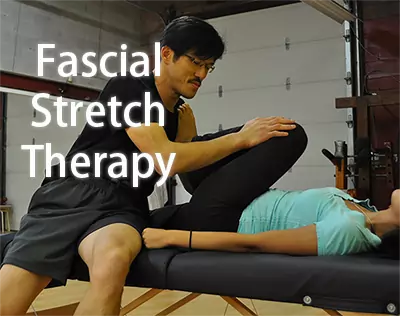Updated on March 29, 2022
Kickboxing training

What is kickboxing
Kickboxing is a combat sport created by Tasuo Yamada a Japanese martial artist, who combined the use of boxing techniques and kicking when facing off a challenger in the ring.
Fitness kickboxing
Fitness kickboxing is a whole-body workout regimen that uses combinations of punching and kicking techniques.
Non-contact - heavy bag target mitts
When you train in fitness kickboxing, you will punch and kick on to a punching bag, target mitts or shadow punching. You don’t punch with bare knuckles but you will punch with a pair of boxing gloves on. You may or may not wear leg or foot pads when executing various kicks. You also don’t get in the ring to face-off with another person. No one receives or delivers any blow to the head or the body.
Kickboxing improves core strength
Kickboxing's punching and kicking combinations are very effective in training the core muscles and help you develop better balance. When launching punches and/or kicks, you will need to counteract the reciprocating force using your abs, obliques, back muscles which are on the trunk of the body.
Technique combinations - footwork with punches & kicks
The following are some of the kickboxing techniques: jab, cross, overhead cross, straight front kick, side kick, roundhouse kick, spinning back hook kick. These techniques are delivered in multiple different combinations. In addition, there is footwork like bouncing, various foot shuffling steps, evasive manoeuvres e.g.; weaving, bobbing, slipping in kickboxing.
Is kickboxing a HIIT workout?
The answer is yes, kickboxing is considered a type of HIIT workout program.
It is more than just a HIIT workout. Kickboxing also helps you to develop movement skills that are transferable to your activities of daily living. After several weeks of continuous training in kickboxing, you may find that your steps are lighter and you will have more bounce in them.
Typically, kickboxing consists of multiple 3-minute rounds interspersed with 1-minute rest intervals in between rounds of activity. This is the HIIT component of the training.
What is high intensity interval training or HIIT?
High intensity interval training is a training regimen with short bouts of highly intense activities alternated with intervals of rest in between. The training regimen is abbreviated to the acronym HIIT (High Intensity Interval Training).
What is Tabata training?
Maybe you’ve heard of the Tabata workout or Tabata training. It is a form of HIIT regimen.
Dr. Izumi Tabata, a Japanese sports scientist/physiologist, has used a form of HIIT, to improve performance of the Japanese Olympic speed skating team. Today, the framework of the Tabata protocol involves 8 sets of 20-seconds high intensity activity alternated with 10-seconds rest intervals. The protocol is a structured way to implement HIIT workouts.
HIIT and good form training
During a 60-minute kickboxing training session, some part of the session will focus on the HIIT aspect of the training and the rest of the time we will focus on technique training. When you’re working on improving techniques, the level of perceived exertion intensity of the fitness kickboxing workout will decrease.
At a slower pace, you’re able to better focus on using the correct techniques and eventually, you can build muscle memory towards using good form.
Good form equals lower injury risk.
Transferable skills to activities of daily living
As you progress further, you will be physically more conditioned and improved your technical skills, we can choose to shift the program to emphasize more on HIIT type training to help boost your physical conditioning goals or you can decide to spend more time on improving skills, or more focus on improving flexibility, coordination.
Physically challenge by change
Having the variability of switching focus of the kickboxing program makes the program more physically challenging by the “disorienting of muscles” effect and helps to keep up your interest in the program.
Change intensity according to fitness level
Although the duration of each round of kickboxing is structured to 3 minutes of activity and interspersed with 1-minute rest intervals in between rounds, the coach or trainer can adapt the workouts to a shorter duration of active rounds and increase rest intervals in accordance with the trainee’s fitness level.
Kickboxing can be unstructured HIIT workout
Within each round of kickboxing, there are periods of extremely high levels of activities followed by periods of lower pace active rest.
Throwing out a flurry of multiple punching and kicking combinations is the high-intensity short burst followed by periods of a slower pace of footwork bouncing or shuffling which are the active rest periods. The timing for delivering punches or kicks is not limited to a fixed number of repetitions, sets and duration. It is unpredictable.
When the challenger presents an open target temporarily, you as the kickboxer, must take the opportunity to strike the target until the open target is no longer available.
The length of time the target is open for strikes is random, it may be open for only 5 seconds, or 3 seconds, over many repeated bursts, during which you would want to land as many strikes as possible until the target is no longer open. This is the high-intensity part of the activities. When the target is no longer open, you will then need to move, bounce and maneuver around the challenger to find another opportunity for an opening in the opponent’s defence. At the same time, you will need to put up your guard hands to defend and evade a potential punch or kick from the challenger. These are the lower pace activities.
So, within a typical kickboxing round, the many repetitions of random short activity burst followed by active rest intervals is akin to another type of HIIT protocol called fartlek training.
What is fartlek training?
Fartlek training is a form of unstructured HIIT training protocol for running/jogging. The term fartlek is the Swedish word for speed play. In fartlek training, the duration and number of intervals of high-intensity sprints and slower speed jogs can be varied randomly.
Therapeutic correction exercises
While working on techniques, our coach may find some restrictions or imbalances in your body’s structural balance. So, we will prescribe and provide training in doing corrective or therapeutic exercises. As we have discussed in our philosophy, we may prescribe therapeutic correction exercises to help you progress forward in the kickboxing program and minimize injury risks.
Energy systems of kickboxing workouts
In order to sustain our bodies through any physical activity, our metabolism process converts food that we ate into fuel for our bodies.
Organically, we expend energy from 3 fuel conversion pathways within our bodies: ATP-CP, Anaerobic and Aerobic energy pathways.
- ATP-CP / ATP Creatine phosphate
Our bodies store small amounts of ATP-CP reserves in muscles. The ATP-CP pathway is able to supply energy very quickly; almost instantaneously.
That way you have the instantaneous energy available for your muscles to pull your hand away from a very hot teapot before you suffer a severe burn, perform a high jump athletic event. Typically, the ATP-CP reserves are depleted after 10 seconds of all out 100% intense activity. After about 3-5 minutes of rest, the ATP-CP reserves will be fully replenished. - Glycolytic / Anaerobic
High-intensity activity activates the anaerobic glycolysis energy conversion pathway.
As the reserves are limited, the glycolytic pathway is capable of supplying energy for a duration of about 1 minute and possibly up to 2 minutes, for a well-conditioned athlete.
An interesting side note: from the evolution aspect, the glycolytic energy pathway is believed to be an ancient metabolic pathway for many living beings.
The glycolytic energy pathway accesses the limited carbs reserves, in the form of blood glucose (sugar), glycogen in muscles (glycogen is sugar when stored in muscle tissues), to produce energy without needing oxygen. Only glucose or glycogen can be metabolized in a low oxygen environment.
So, this form of energy pathway can supply energy quickly in a low oxygen environment for intense activities such as kickboxing’s punching and kicking, or sprinting along the flanks, usually at 80% - 90% capacity, to intercept a ball in a football game.
Upon exhausting all the glycogen and glucose, the post activity effects are:- 1. decreased glycogen reserves in muscle tissues
- 2. acidic by-products of lactate
- 3. micro damage of muscle tissues
In response to the out-of-balance states, our bodies will replenish the glycogen reserves, eliminate lactate by-products, repair damaged muscle tissues. The recuperative process can take from 24 to 48 hours depending on the intensity of the activity. The post activity recovery phase involves chemical reactions which require oxygen and burn calories.
As it is widely known, burning off calories means shedding fat. - Aerobic / Oxidative
The aerobic energy system converts predominantly a large reservoir of fat into energy.
A lesser quantity of carbs (i.e., glucose or glycogen) or protein is converted to energy in the aerobic energy pathway.
Unlike the ATP-CP or the glycolytic energy pathways, the aerobic energy system converts the raw fuel together with oxygen into energy. However, the energy pathway conversion is complicated and goes through many chemical processes. Consequently, the energy production rate is significantly slower.
As long as we are well nourished, the unending source of raw fuel (mainly fat) can produce an unlimited energy supply. As such, the aerobic system allows extended duration or long-term energy supply to our body so it can maintain bodily functions that keeps us alive, or supplies energy when we perform low intensity, typically at 50-70% capacity, steady-state endurance activities e.g., marathon, swimming or low intensity bouncing footwork in kickboxing.
High Intensity Explosive vs Low Intensity Endurance continuum
The 3 energy systems do not function in isolation. They function in a continuum of High Intensity Explosive on one end to another extreme of Low Intensity Endurance.
When launching a combination of explosive punching and kicking flurries, the anaerobic glycolytic pathway is the predominant pathway while a low percentage of energy supply is derived from aerobic energy and ATP-CP pathways.
On the other end, low-intensity high endurance bouncing footwork in kickboxing taps its energy mainly from the aerobic energy pathway, with small percentages from ATP-CP and anaerobic glycolytic energy pathways.
Post HIIT (glycolytic) activity recovery phase
The glycolytic respiration is responsible for metabolizing mainly glucose/glycogen during short bursts of explosive activities. During the post-activity recovery period, the body auto-regulates to aerobic respiration to produce energy/calories from fat stores to restore the chemical, hormonal equilibrium and cell repairs. So, your body will continue to burn calories 24 – 48 hours after the HIIT workout, even while you are resting.
Benefits of kickboxing (HIIT & low intensity technical training)
As HIIT type workout, kickboxing training provides similar health benefits as HIIT training program. However, the lower intensity activity of learning techniques is beneficial for burning off more calories during training session.
- 1. Stress relief
Somehow, it’s relieving and satisfying when we vent our frustration on a punching bag. Kickboxing, like any physical exercise, helps relieve stress. During the workout, physical movements help burn off cortisol, the chemical responsible for stress, and stimulate the release of endorphins, the feel-good hormone. -
2. Improves insulin sensitivity
Insulin resistance is an underlying cause of the metabolic syndrome. Metabolic syndrome is a cluster of conditions of high risk of heart attack, stroke, type-2 diabetes, high blood pressure, excess abdominal fat deposit. Multiple research studies have shown various forms of physical activity program improves insulin sensitivity. -
3. Fat loss
Kickboxing workouts can increase the rate of fat loss by burning calories via the effects of HIIT post-activity recovery and aerobic respiration, especially during lower-intensity technical training. -
4. Reduce blood pressure – a metabolic syndrome
The inherent HIIT nature in kickboxing training has been shown in many research studies to reduce blood pressure.
The fat deposit builds up on the walls of arteries causes the narrowing of blood vessels and atherosclerosis which is, the thickening and stiffening of artery walls. Having less space available in arteries and stiffening of its walls restricts the blood volume distribution thereby increasing blood pressure throughout the entire circulatory system. -
5. Reduce risk of heart attacks, stroke, (cardiovascular diseases metabolic syndrome)
High blood pressure adds stress to the cardiovascular system, including the heart, which will have to work harder to pump blood to the entire body. Restoring healthy blood pressure lowers the risks of heart attack and stroke. -
6. Builds muscle tone, be more flexible – improve mobility
Kickboxing program is effective in building muscle tone and good muscle definition. Unlike bodybuilding, the kickboxing program does not build muscle bulk. The kicking and punching movements increase the range of motion in your hip and shoulder joints thereby improving your flexibility and you’re more mobile. -
7. Improves endurance and stamina
Through HIIT training, kickboxing workout improves stamina and build muscular endurance. The HIIT portion of the training effectively challenges you. -
8. Coordination & Balance
Fitness kickboxing training improves your balance and coordination. While launching kicks, you’ll need to control your balance so you don’t lose balance while standing on one leg. The movement techniques will teach you a sense of balance and strengthen the smaller intrinsic muscles in your body. You’ll develop better a better sense of coordination. -
9. Increased bone mass density
Kickboxing footwork involves bouncing, rope jumping, shuffling, all of which elicits mechanical loading stress onto bone structures. The body naturally adapts by increasing bone mass density. In addition, the impact of punching and kicking on pads or heavy provide mechanical resistance to the bones thus triggering bone-strengthening adaptations. -
10. Movement skills transferable activities of daily living
The movements learnt from practicing kickboxing are transferable to activities of daily living (ADL). For example, the muscle memory of the bouncing and feet shuffling footwork can help you to be lighter in your daily walking, running, or going up a flight of stairs.
Ways to do kickboxing workouts
There are many ways to practice kickboxing. We can practice kickboxing by delivering punching and kicking combinations on a heavy bag. The heavy bag will provide resistance which challenges your muscles and stamina.
Jump rope in kickboxing will help train your footwork agility.
Your coach can hold pads for you to practice and by doing so you can practice to move around and deliver the punching and kicking combinations.
Kickboxing workout is a combination of high-intensity interval training or HIIT (Tabata & fartlek) and endurance training for improving stamina. The post HIIT activity recovery burns calories up to 48 hours after the kickboxing session. Additionally, the lower intensity technical training session burns off calories as would any steady-state endurance activities. All in one, fitness kickboxing will help you burn off calories during technical training as well as use up calories while your body is in post HIIT activity recovery.
Apart from the physical health benefits, practising kickboxing can help relieve stress, thereby improving the state of mental health. Kickboxing training with good form is an effective physical training and safe program.
You may be interested in:
Why sitting causes lower back pain

Why sitting causes lower back pain
Functional Fitness & Strength

Our team of personal trainers can provide personal training in multiple programs: weight training, kettlebells, Essentrics, dance-inspired programs, martial arts training in traditional kung fu, kickboxing.
With a Registered Massage Therapist RMT in our team, Personal Trainer Toronto, has the capability to provide full-body assessments and prescribe therapeutic exercises.
More-about Functional Strength and Fitness programs
Martial arts training

Apart from its self-defence applications, martial arts training program is used as a form of physical training for improving health and wellness.
Personal Trainer Toronto's martial art program is a well-rounded physical training regimen that improves muscle tone, helps with weight loss, and increases strength, flexibility, and coordination awareness.
The personal training in the martial art program is customized to address physical and structural balance issues.
More-about Martial Art program
Essentrics™-Dynamic stretching, strengthening

Essentrics™ is a dynamic stretching, strengthening program. The program is ideal for increasing mobility, range of motion (ROM), stress relief, relax tensed muscles.
More-about Essentrics™ program
Massage Therapy RMT

Our massage therapy sessions are provided by a Registered Massage Therapist RMT. Massage therapy treatments help to release stiffness in muscles, adhesions aka knots, aches and pains, joints stiffness.
If you have workplace health benefits or extended health coverage, you can offset the cost of the massage therapy sessions.
Fascial Stretch Therapy

Fascial Stretch Therapy is a stretching system developed by Stretch to Win. Elite athletes of NFL, NBA, NHL, martial artists and dancers have benefitted from the fascial stretching system to improve their game.
Fascial Stretch Therapy is a form of myofascial stretching therapy.